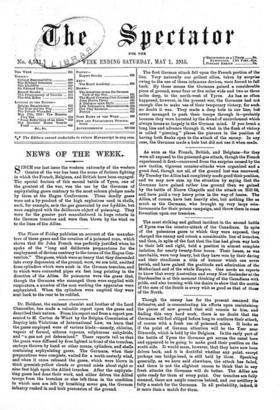Dr. Haldane, the eminent chemist and brother of the Lord
Chancellor, has made a valuable report upon the gases and described their nature. From his report and from a report pre- sented to M. Carton de Wiart by the Belgian Commission of Inquiry into Violations of International Law, we learn that the gases employed were of various kinds—namely, chlorine, vapour of forme!, nitrous vapours, sulphurous anhydride, and " a gas not yet determined." These reports tell us that the gases were diffused by fires lighted in front of the trenches, carboys thrown by hand or other means, cylinders, and shells containing asphyxiating gases. The Germans, when their preparations were complete, waited for a north-easterly wind, and when it came released the gases, which were blown in thick greenish-yellow clouds or ground mists about eight or nine feet high upon the Allied trenches. After the asphyxia- ting gases had done their work, and either driven the Allied troops from the trenches or else left them in the condition in which men are left by breathing sewer gas, the German infantry rushed in and took possession of the ground.


































